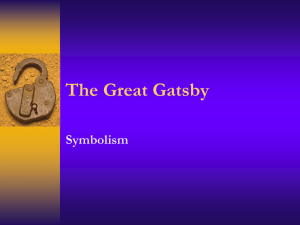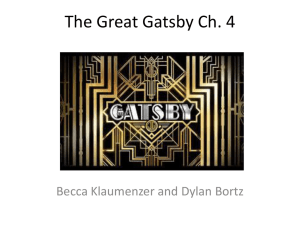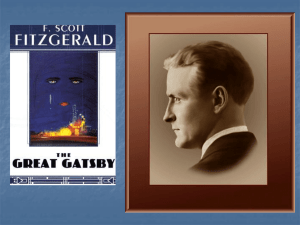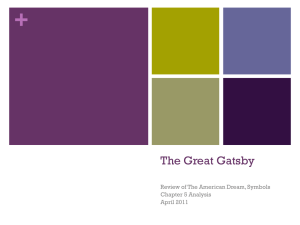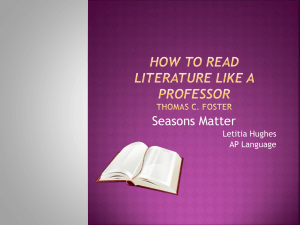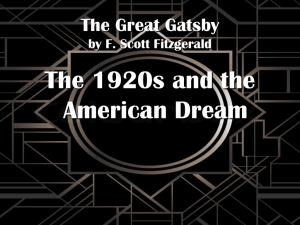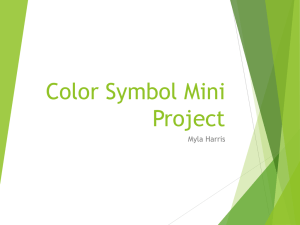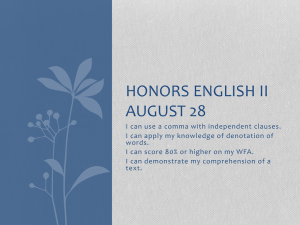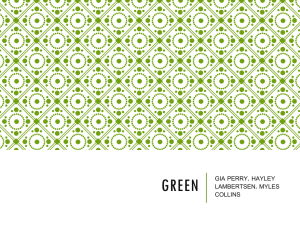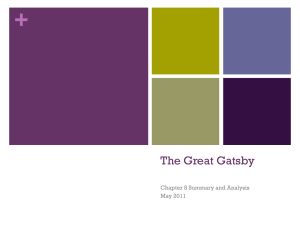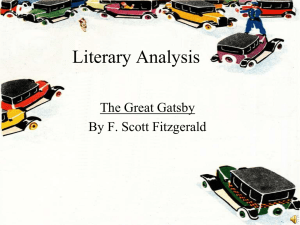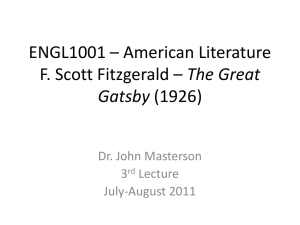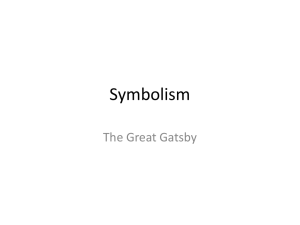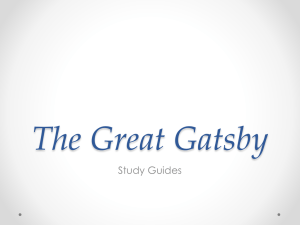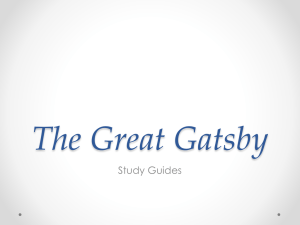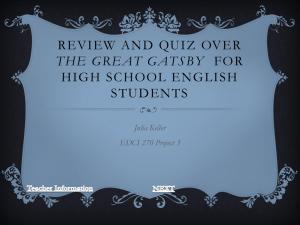The Great Gatsby Literary Elements
advertisement
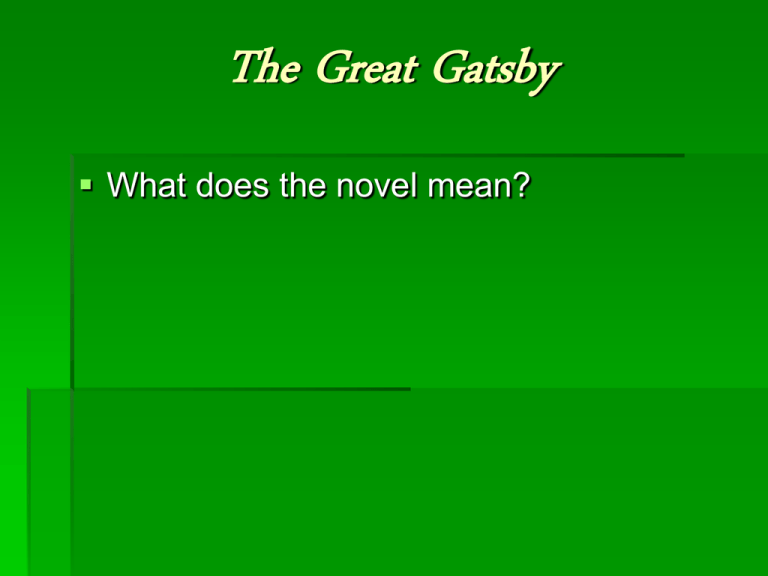
The Great Gatsby What does the novel mean? The Great Gatsby Literary Elements Style The way a writer puts words together Length and rhythm of sentences use of figurative language symbolism dialogue description Style A novel of “selected incident” – part stands for the whole Full of images appealing to the senses – water imagery, color imagery Reflective – Nick reflects on the meaning of the action/events he witnessed Point of View Limited first person / First person secondary Realistic – we learn about characters in bits and pieces over time Gatsby is more sympathetic because of Nick’s decision to become his friend. Form / Structure Who is to tell the story and in what order will events be told? Form / Structure First person narrative and gradual revelation of the past as the narrator learns more and more Extreme selectivity – We have to read closely and piece together things from the few scenes Nick tells us about. We have to draw our own conclusions. Symbolism The valley of ashes The eyes of Dr. T. J. Eckleburg The green light at the end of Daisy’s dock The “owl-eyed” man Gatsby’s boyhood schedule Daisy and the color white Gatsby and his gold tie and silver shirt Theme A theme is an underlying thought or idea that is contained in a literary work. Theme The American Dream Each person can succeed based on their own skill and effort…the self-made man In the 1920s this dream is corrupted by the vulgar pursuit of wealth, fame, glamour and excitement – a showy, empty form of success Theme The Meaning of the Past The past holds something that both Gatsby and Nick seem to long for: a simpler, nobler, better time (values). Theme Hope The green light A reunion with Daisy The belief that one can achieve their dream Theme Disillusionment Gatsby’s belief that you CAN repeat the past Nick comes East to find success, but quickly becomes disenchanted, disillusioned by the lack of morals/corruption. Theme Success For Gatsby, success = Daisy and the only way to win Daisy is through $$$$ Theme Morals The morals of the people with great wealth seem to be less desirable, but many times are more socially acceptable than lower classes. Setting Timeline 1890 – Gatsby is born 1892 – Nick is born 1899 – Daisy is born 1907 – Gatsby meets Dan Cody and sails with him for 5 years 1912 – Dan Cody dies 1914 – WWI begins 1915 – Nick graduates from Yale 1917 – Daisy & Gatsby meet in Louisville 1917 – U.S. enters WWI, Gatsby goes overseas 1919 – Gatsby meets Wolfsheim, just out of the Army 1919 – 18th Amendment (Prohibition) 1922 – Reunited with Daisy! 1922 – Gatsby dies at the age of 32 1924 – Nick tells the reader the story of The Great Gatsby Characterization Daisy Fay Fay – fairy or sprite Daisy – flower, fresh, fragile Daisy promises more than she gives Better to dream about than to possess Let’s others take care of her Uses her $ to protect her from reality Zelda Fitzgerald Characterization Tom Buchanan Possesses double power - physical size and bankroll (strong and rich) Arrogant, used to having his own way Cares only about himself What he does is justifiable to him (tells Wilson where Gatsby is) Tom best represents the “foul dust” Characterization Jordan Baker A link between characters Supplies Nick with information Can easily go back and forth between East Egg and West Egg DISHONESTY Tough, aggressive, will do anything to win The smart new woman of the 1920s – opportunist Hard, boyish body, masculine name, cynical style, cut off from past / no family Characterization Myrtle Wilson An earthy, vital and voluptuous woman She appeals to men Is very jealous of Daisy Dreams of escaping her current life to achieve her unfulfilled dreams Characterization George Wilson He embodies the valley of ashes He has no energy, no faith Lifeless, spiritless Agent of death Characterization Nick Carraway Narrator From a solid, mid-western family Has values/morals Honest, tolerant, understanding Both admires Gatsby and disapproves of him He is Gatsby’s friend – he understands him Characterization Jay Gatsby He has committed crimes to acquire wealth to win back the woman he loves – another man’s wife We are asked to love Gatsby because of his dream Others know him only through rumors because they don’t really care Only Nick genuinely cares and from Nick we learn the truth Is he great? Fitzgerald’s Use of Color Gatsby – gold tie, silver shirt, pink suit, white suit, green light, yellow car Daisy – white, yellow, glowing face Tom – Straw-haired, shining eyes, glistening boots Jordan – white, gray, sun-stained Myrtle – brown, cream, dark red George – light blue eyes, pale hair, cement color
